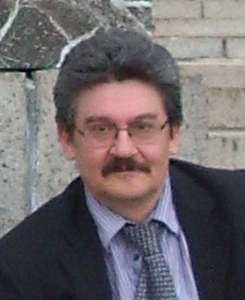


Biological materials are a rewarding area of modern materials science, yielding both evolutionary insights and inspiration for biomimetic research. In particular, biocomposite structures are valuable sources of novel structures with unusual chemical properties, and they are very informative for the mechanisms of biomineralization. In the first part of my lecture, I will report about the unique biocomposite of amorphous silica, crystalline aragonite, and chitin from species of the order Verongida, a group of marine sponges. The structures have been analyzed with a diverse suite of techniques, revealing a chitinous template for siliceous overgrowth containing aragonite-based crystal aggregates. Thus, sponge chitin is an example of a specific template where two minerals in amorphous and crystalline nanoforms are formed together with an organic molecule. In the second part, I will report about the discovery that hierarchical design in naturally occurring brittle silica-based sponge skeleton determined by complex silica-silica joints is mediated by an unique silica-calcite biocomposite. We employed a mild technique to dissolve silica from glass sponge spicules and have for the first time demonstrated unambiguously that the organic matrix templates both mineral phases: amorphous silica as well as crystalline calcium carbonate (calcite). The unusual pattern of this biocomposite offers an insight into the role played by calcite in the formation of these three dimensional glassy constructions which are intriguingly similar to macroscopic hierarchical frameworks and which can be traced back to at least to Eiffel's design of his tower. The discovery will impact on a range of research fields as diverse as biomimetic materials science, bionics, architecture, evolutionary biology and biomineralization. Our findings will require a re-thinking of the role of crystalline minerals in stabilization and coupling of amorphous silica-based structures and open up new strategies for the biomimetic synthesis of new materials. In the final part of my lecture, I will speak about discovery of hydroxylated collagen as novel template for biosilicification in nature as well as about Extreme Biomimetics, which is proposed by us as a new direction in materials science with respect to develop a new generation of biomaterials.



Biological materials are a rewarding area of modern materials science, yielding both evolutionary insights and inspiration for biomimetic research. In particular, biocomposite structures are valuable sources of novel structures with unusual chemical properties, and they are very informative for the mechanisms of biomineralization. In the first part of my lecture, I will report about the unique biocomposite of amorphous silica, crystalline aragonite, and chitin from species of the order Verongida, a group of marine sponges. The structures have been analyzed with a diverse suite of techniques, revealing a chitinous template for siliceous overgrowth containing aragonite-based crystal aggregates. Thus, sponge chitin is an example of a specific template where two minerals in amorphous and crystalline nanoforms are formed together with an organic molecule. In the second part, I will report about the discovery that hierarchical design in naturally occurring brittle silica-based sponge skeleton determined by complex silica-silica joints is mediated by an unique silica-calcite biocomposite. We employed a mild technique to dissolve silica from glass sponge spicules and have for the first time demonstrated unambiguously that the organic matrix templates both mineral phases: amorphous silica as well as crystalline calcium carbonate (calcite). The unusual pattern of this biocomposite offers an insight into the role played by calcite in the formation of these three dimensional glassy constructions which are intriguingly similar to macroscopic hierarchical frameworks and which can be traced back to at least to Eiffel's design of his tower. The discovery will impact on a range of research fields as diverse as biomimetic materials science, bionics, architecture, evolutionary biology and biomineralization. Our findings will require a re-thinking of the role of crystalline minerals in stabilization and coupling of amorphous silica-based structures and open up new strategies for the biomimetic synthesis of new materials. In the final part of my lecture, I will speak about discovery of hydroxylated collagen as novel template for biosilicification in nature as well as about Extreme Biomimetics, which is proposed by us as a new direction in materials science with respect to develop a new generation of biomaterials.